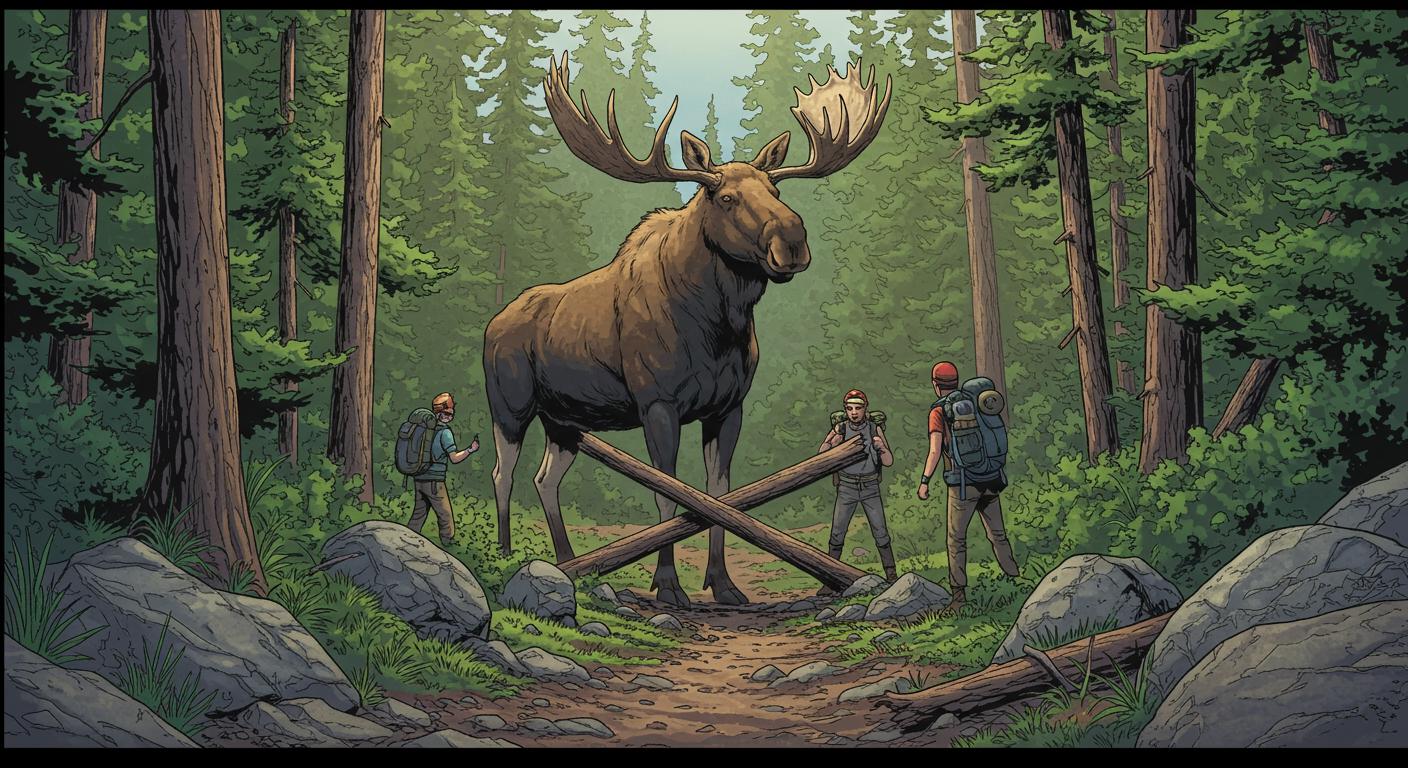If you’ve ever felt stubborn for lingering in a café long after closing, let me introduce you to the new gold standard of refusal: a resident bull moose on Goodman Mountain in Tupper Lake, New York. In a twist noted by The Weather Network, the Goodman Mountain trail—a fixture of the local hiking scene—has remained closed since early June, thanks to one particularly immovable ungulate. Anyone eager for a panoramic summit view will have to look elsewhere. The moose, it seems, isn’t in any hurry.
Not Your Average Trail Detour
When wildlife gets territorial, most hikers expect a fleeting encounter—a flash of antlers in the distance, maybe. But as recounted in coverage from Syracuse.com, this particular bull moose was first observed on Goodman Mountain in May and has since made itself at home, traversing not only the trailhead but the summit as well. Rather than meandering along, the moose has stayed put for over a month, drawing attention from the New York State Department of Environmental Conservation (DEC). Staff, accompanied by a state wildlife veterinarian, visited the site on July 10 to investigate. Their assessment, described in detail by the Adirondack Almanack, points to the animal exhibiting what they charitably call “unusual behaviours,” likely stemming from an underlying illness.
Despite DEC efforts—ranging from gentle attempts to nudge the moose elsewhere to active monitoring—the moose hasn’t budged. The reasoning for the ongoing closure, outlined jointly by the DEC and various outlets, centers on both the moose’s welfare and human safety. Even healthy moose warrant a wide berth, but unpredictability (especially when illness is suspected) makes things a good deal trickier. While aggression hasn’t been observed, the prevailing wisdom is that a sick, unpredictable, six-foot-tall, 1,000-pound animal is exactly the sort of trail obstacle you’d rather avoid sidestepping in person.
Safety First, for All Species
It would be one thing if this were a seldom-used trail; however, the Goodman Mountain hike features prominently in the popular Tupper Lake Triad challenge. The closure reverberates through the community, effectively placing a single moose in charge of local recreation plans. As North Country Public Radio details in its own account, moose—even those appearing passive—can quickly become dangerous if startled by hikers trying to pass. Some might call it an object lesson in reading the room (or the forest, in this case).
Forest rangers, according to the outlets tracking the saga, are enforcing the closure with posted signage, urging would-be hikers to choose an alternative trail for now. The DEC has indicated they’ll keep the closure active until conditions are genuinely safe for both species involved—meaning hikers will have to exercise patience, much like the moose itself.
When Nature Forgets to Read the Trail Guide
Public reactions, captured in the Adirondack Almanack’s reader comments, reveal a typical tension between pragmatism and bemusement. Some regulars of the Adirondacks argue that moose are known for “funky” behavior, suggesting the best approach is to let nature run its course as long as the animal isn’t creating chaos. Others, wary of potential illness like brainworm, have questioned whether prolonged monitoring is appropriate or if a less gentle intervention is warranted. One can’t help but notice the dry practicality in these exchanges: outdoor enthusiasts are used to adapting to the unpredictable, but even they seem taken aback by the sheer stubbornness at play.
The DEC’s cautious approach may reflect both the animal’s condition and the state’s relatively small moose population. Data referenced by Syracuse.com notes there are roughly 650 moose in New York as of 2018—every case, then, becomes a case study in balancing conservation, public interest, and unpredictability.
Reflections on Wild Neighbors and Human Boundaries
Ultimately, the standoff at Goodman Mountain is about more than trail closures or wildlife management. It’s a case study in how wild spaces, regulations, and plain old animal obstinacy intersect. Trails might be designed for hikers, but the moose on the mountain is making its own edits to the plan. For now, no one can confidently predict if the animal will wander off or force a more definitive official response. Is there a master plan to coax a determined moose off a beloved hiking trail, or is patience the best tool at hand?
If there’s a lesson in this saga, it’s that nature can still rewrite our schedules and priorities, no matter how many rangers, veterinarians, or trail guides we send in. For now, the Goodman Mountain moose remains both a local celebrity and a reminder: in the end, nature holds the veto power—sometimes, it’s exercised with nothing more than quiet and unyielding presence.







